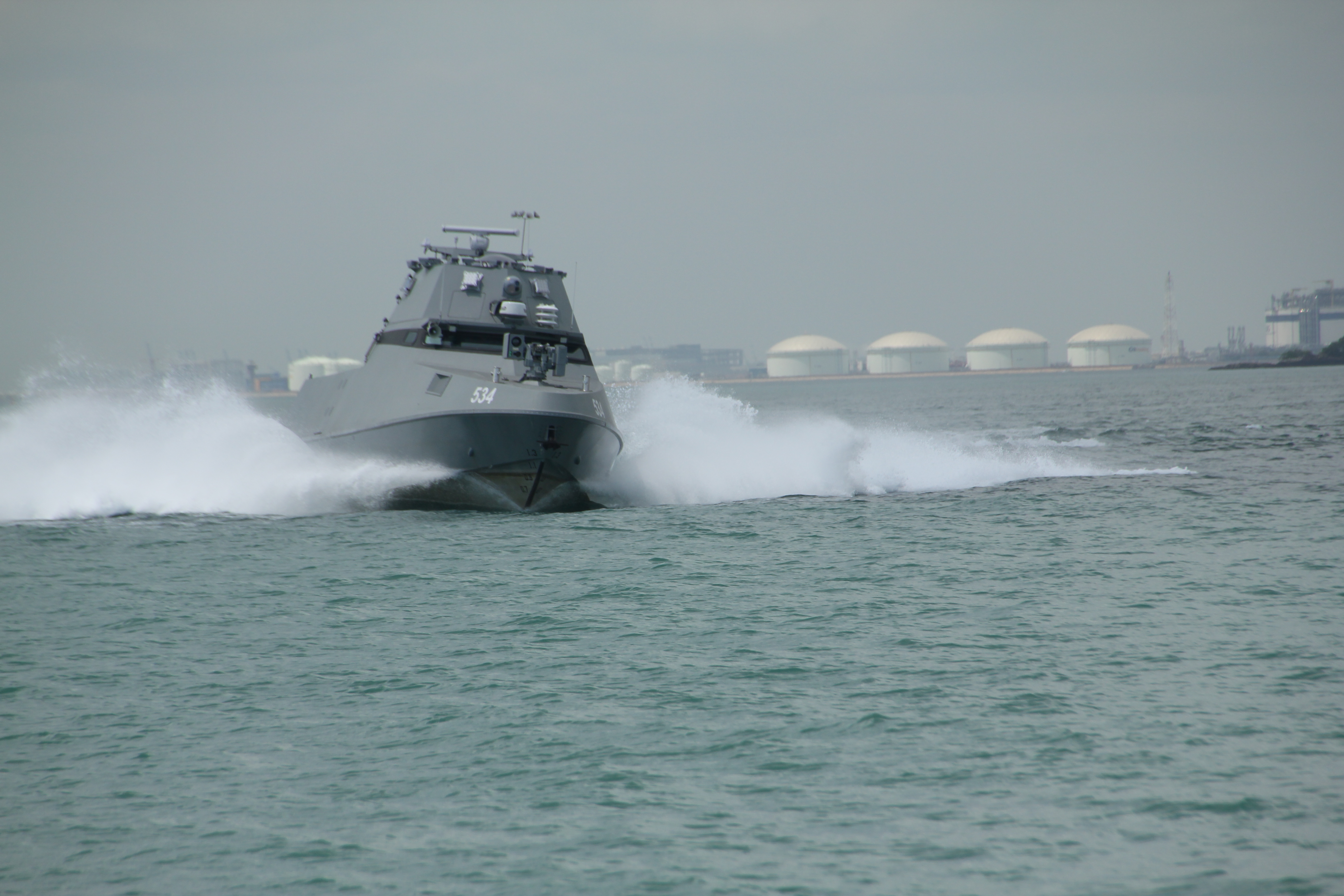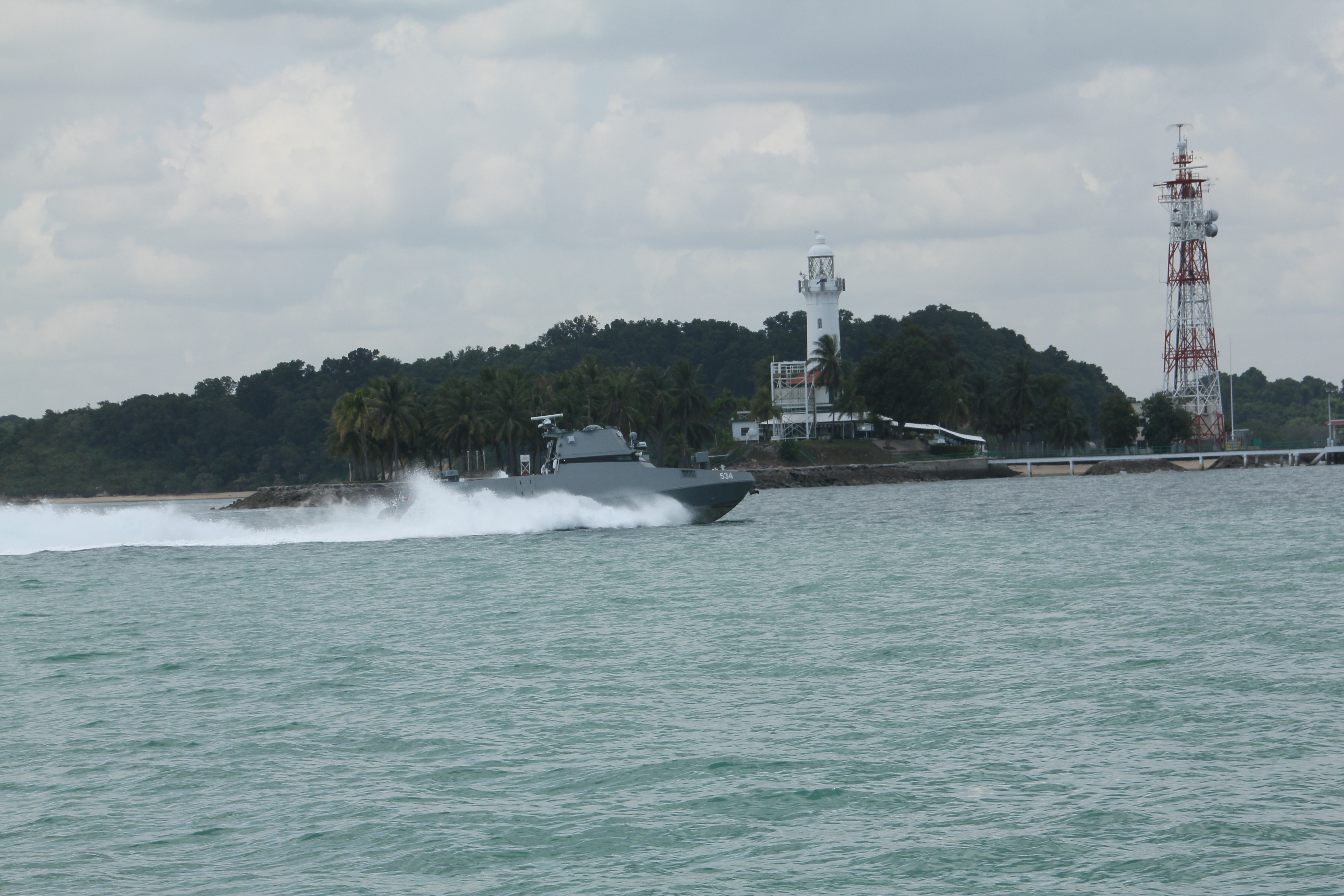Making Waves Automatically
With about 1,000 vessels passing through Singapore’s waters per day, ensuring the safety of our coastal defence 24/7 is no easy task. What if we introduced a fleet of Unmanned Surface Vessels (USV) to lend a hand?
That was exactly what our team did: develop the Maritime Security (MARSEC) USVs to help strengthen maritime homeland defence. The project was a joint effort between us and the RSN, DSO National Laboratories (DSO) and ST Engineering.
By harnessing the latest technologies in autonomous navigation and command, control and communications (C3), the USVs enable autonomous operations in dense and complicated maritime environments. The USVs are able to conduct round-the-clock patrols, relieving manned ships for other maritime security functions. The USV’s suite of payloads allows it to investigate suspicious vessels to complement manned ships such as the RSN’s Littoral Mission Vessels.


Photos: ST Engineering
The first USVs to be operationalised for the RSN, the MARSEC USVs had to be able to navigate Singapore’s busy maritime traffic and cope with the constantly changing conditions at sea so as to ensure safe and predictable autonomous interaction with other sea farers.
Enter the Collision Detection and Collision Avoidance (CDCA) algorithm. Developed by our technologists in collaboration with partners from DSO, the CDCA integrates the USVs’ radars, stereovision cameras, and collision detection equipment used for manned maritime navigation with a specially designed algorithm. Powered by artificial intelligence, it automates the collision avoidance decision-making process while ensuring that the USVs show an avoidance behaviour compliant with navigation rules from the International Regulations for Preventing Collisions at Sea.
The USVs also rely heavily on their in-house designed C3 system, which is the first of its kind in RSN. The system combines the functions of traditionally separate systems into a single system, allowing operators to plan and execute missions, control equipment payloads, and monitor the vessel’s health status, all through a unified interface. It also connects to the RSN’s greater C3 ecosystem, giving commanders a common and comprehensive sea situational picture so they can make more informed and effective decisions.
“One challenge that our development team faced was the need to design the C3 system for lean manning amid the sheer complexity of the USV system, which comprises multiple sub-systems and payloads, and required large amounts of data to be exchanged constantly between the vessel and the C3 system on shore,” said Senior Development Programme Manager (C3 Development) Goh Boon Yeow.
The team employed purposeful user experience (UX) design to ensure that that the system would be intuitive and easy to operate. For example, they developed an automatic route generation tool in the system so that operators could create patrol routes simply by selecting the start and end points. The C3 system also presents operators with real-time visualisation of CDCA results to help them make decisions for navigational safety.
Advanced cybersecurity protection measures are integrated into the USVs, with all wireless communication channels between the vessels and shore authenticated and encrypted. Analytics is also performed on logs generated by the USVs and shore systems to detect abnormal events that might be symptomatic of cyber threats.
The USVs have undergone months of lab simulations running millions of kilometres, and also hundreds of hours of actual sea trials to validate their performance.
“It was quite an experience to witness first-hand the USVs making its own collision avoidance manoeuvres without any human intervention. It was like something straight out of a sci-fi movie!” said Capability Senior Programme Manager (Naval Systems) Teo Tee Cheng, who was part of the safety crew that sailed in the USVs during the trials.
